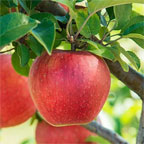- Q.Sulfur In Soil - I moved into a new home last spring, and the people had dumped a couple bags of sulfur over the ...
- Q.High Phosphorus - The phosphorus is very high in my vegetable garden. What should I do?
- Q.Clay Soil Lawn, Best Type Of Worm - I live in Charlotte, NC. and the soil is heavy clay. I have a 1200 sq. ft. front lawn and ...
- Q.Planting Trees And Shrubs In Clay - Next weekend I will be planting trees and shrubs in my backyard. It is very well clay-like, so we created ...
- Q.Soil Additives - How do I know how much wood ash or other ingredients to use in order to make my garden soil healthy enough ...
- Q.Is White Mildew/Mold In Soil Eventually Harmful To All Plants? - We've bought soil from different sources, and granted our garden areas do not get full sun all day long; however, ...
- Q.Green Soil - Just put in a vegetable garden. On one end of the garden, the soil is turning green. I reworked the ...
Q.Sulfur in Soil
I moved into a new home last spring, and the people had dumped a couple bags of sulfur over the back lawn and now the grass is having a hard time growing in a couple of areas. It starts out ok and then looks like it starts to turn brown and burnt. Is there something I could use to neutralize the sulfur in the soil?
- A.
The sulfur is most likely reacting to other sprays that you are using on your lawn and this is what may be killing the grass. If you are using other sprays on your lawn, stop using them for a little while, especially in the areas where the grass is having trouble. In the mean time, you can try adding lime to the soil to help counteract the sulfur and also increase watering so as to leech the extra sulfur away.
Was this answer useful?00
Q.High Phosphorus
The phosphorus is very high in my vegetable garden. What should I do?
- A.
Normally, too much phosphorous does not cause issues as plants have a hard time taking up too much phosphorous in the first place. The soil can be balanced back out some by adding in nitrogen rich amendments like composted manure.
Was this answer useful?00 Q.Clay Soil Lawn, Best Type of Worm
I live in Charlotte, NC. and the soil is heavy clay. I have a 1200 sq. ft. front lawn and a 3000 sq. ft. rear lawn. I want to know how many worms, and what type of worm, I should buy to help with aeration and soil conditioning. I have read that worms for the lawn become a nightmare to control, and I will wind up with a problem eventually, due to castings making the lawn slippery and muddy.
- A.
Earthworms introduced into the soil will help aerate and add more nutrients to your lawn. These articles will help as well: https://www.gardeningknowhow.com/garden-how-to/soil-fertilizers/how-to-improve-clay-soil.htm
https://www.gardeningknowhow.com/special/organic/compost-for-organic-gardens.htmWas this answer useful?00 Q.Planting Trees and Shrubs in Clay
Next weekend I will be planting trees and shrubs in my backyard. It is very well clay-like, so we created a bed since we couldn't cut the grass. Part of it is very wet and the grass grew fast last year (I don't think it will be a problem for the trees/shrubs to survive), but there is another area that was rocky dirt brought in (not good soil). What should I put down when planting the new trees/shrubs? No time for rototilling, just want to ensure that the plants survive.
- A.
If you can't till, you can use lasagna methods for amending the soil. These articles will help:
https://www.gardeningknowhow.com/garden-how-to/soil-fertilizers/lasagna-gardening.htm
https://www.gardeningknowhow.com/special/organic/compost-for-organic-gardens.htmWas this answer useful?00 Q.Soil Additives
How do I know how much wood ash or other ingredients to use in order to make my garden soil healthy enough to grow good crops? My root crops are small and few. My tomatoes and squash do fine.
- A.
You really need to do a soil test (either a home test or one from the extension service) to tell exactly what your soil might need and how much. This article can help you with knowing what your soil's needs might be:
https://www.gardeningknowhow.com/edible/vegetables/vgen/vegetable-garden-soil.htmAs for your root vegetables, the soil is probably too heavy. You can amend it to make it lighter: https://www.gardeningknowhow.com/garden-how-to/soil-fertilizers/how-to-improve-clay-soil.htm
Was this answer useful?00 Q.Is White Mildew/Mold in Soil Eventually Harmful to All Plants?
We've bought soil from different sources, and granted our garden areas do not get full sun all day long; however, our summers have been very dry and hot. This year the wind is drying the soil even more now. So we water frequently. Problem is, while plants seem to like it, the soil has developed what I believe is mold: white throughout when I dig. Is this common? Harmful to plants? What do you recommend to get rid of it?
- A.
It's possible that what you have in your soil is mychorrizae fungus, a highly beneficial and desireable organism which breaks down organic nutrients for the plant roots to absorb. Mychorrizae is the key to successful bonsai, for instance, and forms a symbiotic relationship critical for potted pines to live in a closed environment. It is a distinctly filamentous (ie. "stringy"), substance which doesn't show above the surface but permeates the root area of the soil. If what you have is a surface organism, it is likely something else altogether. In any case, be it mildew or mold, it will not thrive unless the soil is damp and somewhat shaded.
Was this answer useful?00 Q.Green Soil
Just put in a vegetable garden. On one end of the garden, the soil is turning green. I reworked the garden to improve drainage but the north stays somewhat moist, causing the soil to develop a green coat. I don't think I will get the drainage any better. What can I do?
- A.
Since drainage is definitely an issue here that is causing algae to build up in the soil, you may want to consider putting in a raised garden bed instead. Alternatively, you could construct a berm to redirect the drainage to another area. These articles should help: https://www.gardeningknowhow.com/edible/vegetables/vgen/raised-vegetable-gardens.htm
https://www.gardeningknowhow.com/special/spaces/creating-and-using-berms-in-the-landscape.htm
https://www.gardeningknowhow.com/special/spaces/building-a-berm-how-do-i-make-a-berm.htmWas this answer useful?00



